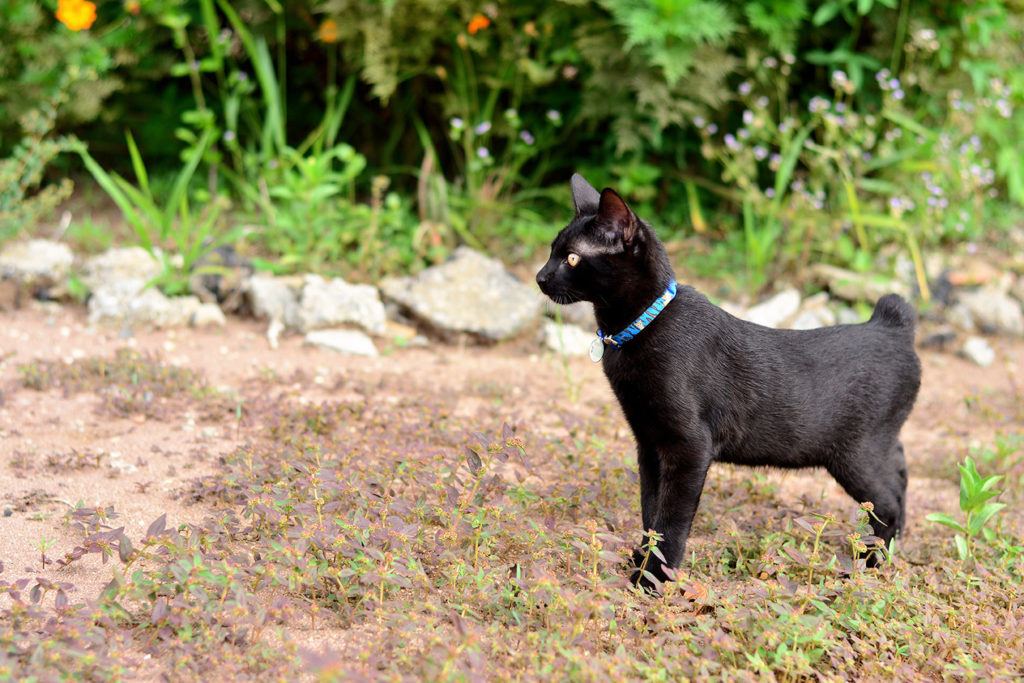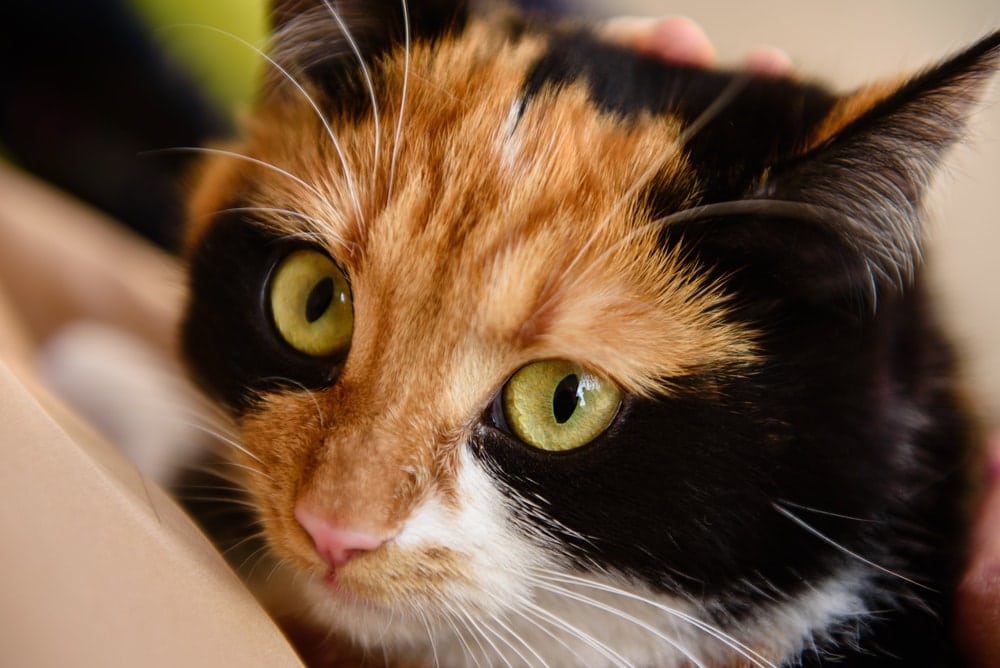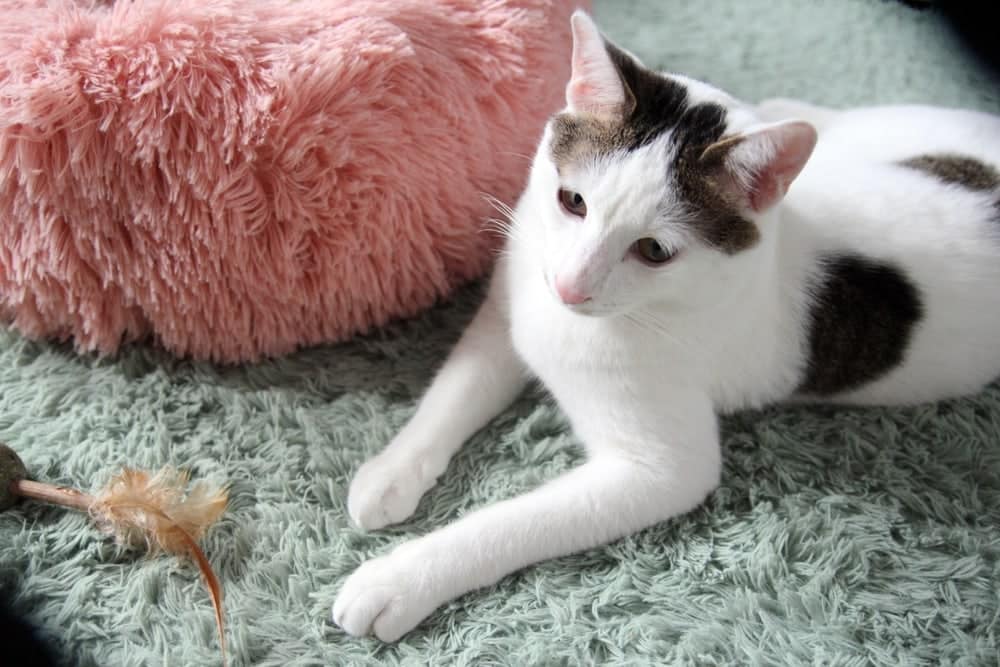Japanese Bobtail cats are friendly, generally healthy, and low maintenance. They are playful companions but like all pets, have their share of expenses that you’ll need to plan for. You’ll need to consider the adoption or breeder’s fee, the initial supplies, and their monthly care needs.
If your Japanese Bobtail cat is healthy, your ongoing expenses will likely remain low. That said, you should always keep the potential costs of pet ownership in mind before you choose to care for a new cat. What expenses to expect for a Japanese Bobtail cat are included in this guide. We hope that it helps you prepare your budget for your new furry friend!
Choose the topic you would like to review first:
- One-Time Costs
- Initial Setup and Supplies
- Monthly Expenses to Consider
- Total Monthly Cost
- Additional Costs
Bringing Home a New Japanese Bobtail Cat: One-Time Costs
Your Japanese Bobtail will cost a hefty amount when you first take steps to bring them home. Adopting or buying from a breeder involves different prices, and even a free Japanese Bobtail will have expenses for you to meet. You’ll also need to buy supplies.
Free
You’ll have your work cut out for you if you want to find a Japanese Bobtail for free. They’re difficult to find and often only available at a breeder. You might get lucky if you have a neighbor or a friend with a Japanese Bobtail who can no longer take care of their pet. Instead of letting them surrender their pet to a shelter, offer to take in the cat.
Adoption
- $75–$150
Although you have to pay an adoption fee if you visit a shelter or rescue, it is often the cheapest option available, especially if you have a tight budget. The breed is relatively rare, so you might have difficulty finding one in a local shelter, though some rescues specialize in Japanese Bobtails.
Shelters can cost between $75 and $150, and you’ll still need to purchase the supplies needed to take care of a cat. However, the adoption fee will likely cover spaying or neutering costs, which will save you money later.

Breeder
- $500–$2,000
You should always check shelters and rescues before trying to find a breeder. The animals surrendered to shelters might not have pedigree papers or known health histories, but they are also in need of loving homes.
Breeders are also the most expensive options when it comes to purchasing a Japanese Bobtail. The rarity of these cats makes them pricey to purchase, and the breeder’s cost won’t include the initial supplies that you’ll need. That said, if you want a pedigree Japanese Bobtail for breeding or show purposes and have the funds to support the endeavor, a reputable breeder is your best option.
Initial Setup and Supplies
- $75–$500+
In certain cases, a shelter or a breeder will give you a few supplies to start you off when you first get your cat. However, you will be expected to provide for your cat yourself, and these won’t be substantial enough to avoid needing to purchase your own. Even if you own a cat already and can share their stuff with your new arrival, certain supplies will be a necessary expense.
List of Japanese Bobtail Cat Care Supplies and Costs:
| ID Tag and Collar | $5–$20 |
| Spay/Neuter | $100–$500 |
| X-Ray Cost | $100–$400 |
| Ultrasound Cost | $300–$600 |
| Microchip | $45–$70 |
| Teeth Cleaning | $100–$400+ |
| Cat Bed | $10–$70 |
| Cat Tree | $20–$200 |
| Nail Clipper (optional) | $5–$30 |
| Brush (optional) | $5–$25 |
| Litter Box | $5–$100+ |
| Litter Scoop | $3–$15 |
| Toys | $5–$25 |
| Carrier | $15–$79 |
| Food and Water Bowls | $5–$30 |
| Cat Food | $5–$85+ |
| Scratching Post | $7–$50 |

How Much Does a Japanese Bobtail Cat Cost Per Month?
- $20–$1,500+ per month
If you’ve owned pets before, you’ll already know how expensive they can be from month to month. Healthcare, entertainment, and environmental maintenance are all things that you need to consider. The costs can also vary as time goes on, with you spending less one month and then more during another.
Monitoring your budget and balancing your expected expenses will help you plan for the care costs of your Japanese Bobtail. These can be things like food and grooming needs or surprise outgoings due to accidents or illness.
Health Care
- $20–$1,500+ per month
Keeping your Japanese Bobtail cat healthy is the most expensive part of pet ownership. It’s an ongoing responsibility that will require monthly expenses and keen attention to the individual needs of your cat, from kittenhood all the way to seniority.
Healthcare doesn’t just cover veterinary visits. You’ll also need to consider food and grooming costs. Pet insurance is another monthly expense that you might be interested in.
Food
- $5–$85+ per month
There are several types of food to buy for your Japanese Bobtail, including treats for good behavior and snacks for keeping their teeth clean. Their diet needs to be high quality and formulated for their age and health, which can get expensive but is worth it.
Search for the best-value, high-quality cat food to get the most out of your budget and ensure that your cat receives the nutrition that they need. Keep in mind that fresh food alternatives are expensive.

Grooming
- $0–$150 per month
Japanese Bobtail cats are low maintenance when it comes to their grooming needs. They do shed but only need to be brushed once or twice a week to keep their coat in good condition. You can save money by grooming your cat yourself, in which case, your only cost is the initial purchase of grooming supplies. Alternatively, you can hire a professional groomer to give your Japanese Bobtail a full spa treatment.
Depending on where you live and how much grooming your cat needs, a groomer’s costs will vary. Simple sessions can cost around $50, while more extensive ones can cost up to $150.
Medications and Vet Visits
- $20–$1,500+ per month
The Japanese Bobtail is a hardy and relatively healthy breed. When you take proper care of them and stay on top of any developing health issues, you likely won’t need to visit a vet every month. There are a few costs to plan, though, and they can vary from month to month.
Vet visits can cost well over $1,500, depending on the treatment that your cat requires. Routine visits for a healthy animal might only be around $50–$250, but accidents, sudden illnesses, and ongoing care for issues that they’ve developed can be incredibly expensive.
Pet Insurance
- $0–$60 per month
Pet insurance is optional, and the cost will depend on how old your Japanese Bobtail is and the provider whom you get a policy with. On average, most plans cost around $25–$35 a month, but you can find cheaper or more expensive policies.
The monthly cost of pet insurance shouldn’t be your only focus. You also need to consider what you’re covered for. A cheap plan might seem friendlier to your budget, but if it doesn’t provide the coverage that your pet needs, you’ll be spending more on vet bills.

Environment Maintenance
- $10–$90 per month
Japanese Bobtail cats are friendly and love to play, but they can also be messy. They shed hair and track litter across the house, and you’ll have a few icky messes to clean up sometimes too. Keeping your house clean and ensuring that they have a clean litter tray will prevent unwanted odors and stains from developing.
Most of all, you’ll need a regular supply of litter to keep your cat’s litter tray topped up and clean. Litter box liners and enzyme cleaners are ideal for helping you clean up messes, and keeping a few on hand will save time later.
| Litter | $10–$40 per month |
| Litter box liners (optional) | $5–$30 per month |
| Enzyme cleaner | $8–$40 per month |
| Cardboard scratcher | $9–$85 per month |
Entertainment
- $10–$40 per month
As playful as they are, your Japanese Bobtail will need a variety of toys and activities to keep them entertained. They’re prone to obesity, so keeping them active with different types of toys will help you manage their weight. You’ll need to buy and replace toys as they break.
Jingle balls, wand toys, or screwed-up paper balls are often the most affordable options. Or you can splurge for battery-operated toys that will keep your cat busy while you’re out of the house. There are also subscription boxes designed for cats. These require a monthly fee but will contain an assortment of toys and treats for your cat to try.
Total Monthly Cost of Owning a Japanese Bobtail Cat
- $20–$1,500+ per month
The monthly costs of pet ownership will rarely be as high as the purchase price for your Japanese Bobtail—not all at once, anyway. There are occasions when an emergency might lead to a costly trip to the vet, but mostly, you’ll be spending money on routine care costs like food, toys, and litter. Remember to consider all possibilities before planning your budget, and search for ways to save funds for the occasional treats.
Additional Costs to Factor In
Emergency veterinary care costs and fixing household damage are two of the biggest extra expenses to set aside funds for. An accident or illness affecting your cat is one of the most expensive things that you will face as a pet owner.
Also, there are times when you will be unable to care for your cat due to being on vacation or if you’re hospitalized for any reason, so you will need to consider boarding fees. You can hire a pet sitter who will charge by the hour or for overnight visits, but you can also spend extra for your cat to stay at a cattery. Asking friends and family for help can help you save money, but you should reimburse them for their time too.

Owning a Japanese Bobtail Cat on a Budget
Preparing your budget is essential if you want to make sure your cat is well looked after. That said, the cost of pet ownership can be disheartening if you have a tight budget. But a small budget doesn’t mean you can’t have your own Japanese Bobtail. You’ll need to plan accordingly—and pay close attention to all of the costs of cat ownership—but it is possible.
When you start looking for cat care supplies, don’t settle for the first options that you find. Getting supplies that are high quality and good value can take a bit of digging, but it’s well worth the effort.
Saving Money on Japanese Bobtail Cat Care
Pets are expensive, but you can save money on pet care if you shop around. Although it can be nice to spoil your Japanese Bobtail with brand-new supplies, sometimes it’s more cost-effective to purchase secondhand.
Thrift stores and yard sales are excellent sources for all sorts of useful things, from water and food dishes to toys. Provided that you make sure the products and toys are clean and in good condition, they’ll be just as usable as brand-new ones. You’ll even save a few dollars to put toward your cat’s favorite treats!

Conclusion
An ancient breed originating in Japan, the Japanese Bobtail is most common in Asia but is steadily growing in popularity in the U.S.A. Their rarity makes them an expensive pet to purchase, and getting one from a breeder will often cost between $500 and $2,000. Adoption is cheaper, often costing between $75 and $150, depending on the facility, though it might be challenging to find a Japanese Bobtail outside of rescues dedicated to the breed.
Beyond the initial cost, the monthly expenses need to be considered. It can be expensive to own a Japanese Bobtail, especially if they develop an illness or have an accident. With veterinary care, routine, and emergencies, you also need to prepare for food, grooming, boarding, pet insurance, and even home maintenance. On average, you can expect to spend a few hundred dollars a month on your cat.
Featured Image Credit: Algorithm images, Shutterstock











